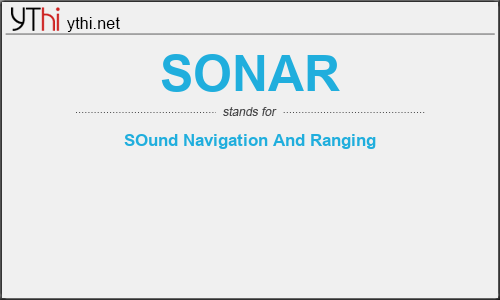What does SONAR mean? What is the full form of SONAR?
The full form of SONAR is SOund Navigation And Ranging. It’s used on Academic & Science ,Ocean Science in Worldwide
Sonar, short for Sound Navigation and Ranging, is helpful for exploring and mapping the ocean because sound waves travel farther in the water than do radar and light waves. NOAA scientists primarily use sonar to develop nautical charts, locate underwater hazards to navigation, search for and map objects on the seafloor such as shipwrecks, and map the seafloor itself. There are two types of sonar—active and passive.
Active Sonar
Active sonar transducers emit an acoustic signal or pulse of sound into the water. If an object is in the path of the sound pulse, the sound bounces off the object and returns an “echo” to the sonar transducer. If the transducer is equipped with the ability to receive signals, it measures the strength of the signal. By determining the time between the emission of the sound pulse and its reception, the transducer can determine the range and orientation of the object.
Passive Sonar
Passive sonar systems are used primarily to detect noise from marine objects (such as submarines or ships) and marine animals like whales. Unlike active sonar, passive sonar does not emit its own signal, which is an advantage for military vessels that do not want to be found or for scientific missions that concentrate on quietly “listening” to the ocean. Rather, it only detects sound waves coming towards it. Passive sonar cannot measure the range of an object unless it is used in conjunction with other passive listening devices. Multiple passive sonar devices may allow for triangulation of a sound source.
SONAR
means
SOund Navigation And Ranging![]()
Translate SOund Navigation And Ranging to other language.


Leave a Reply
You must be logged in to post a comment.